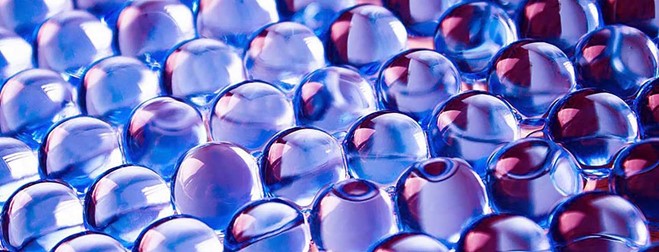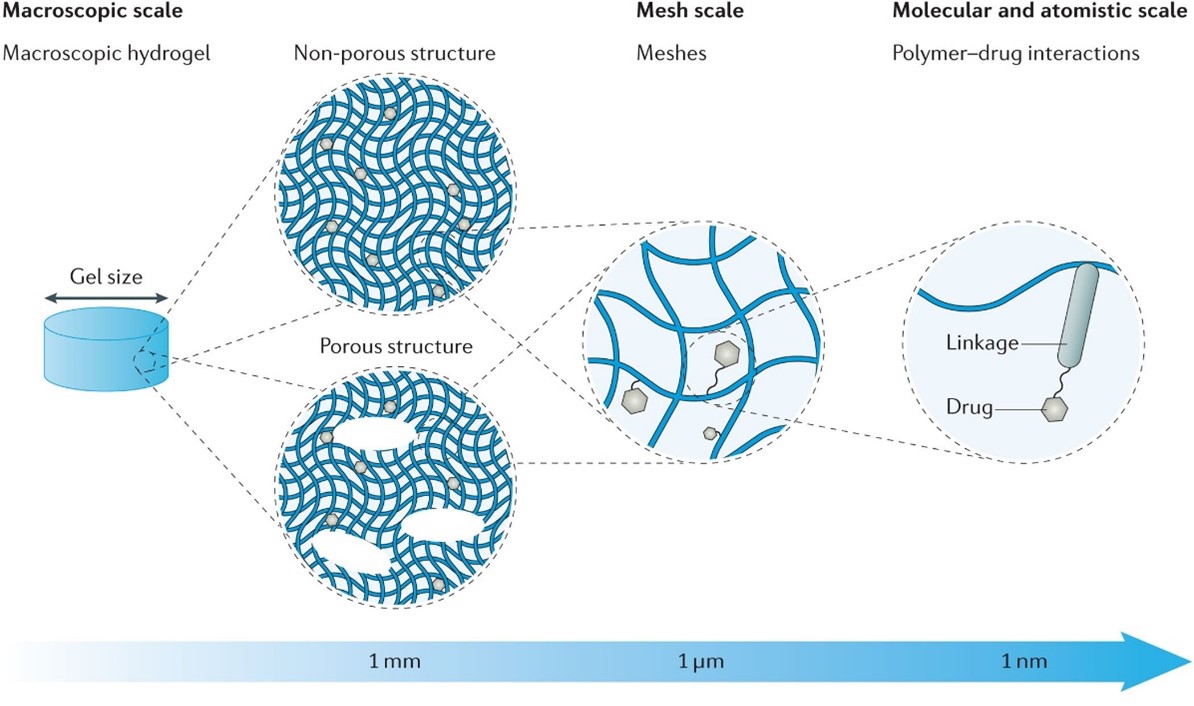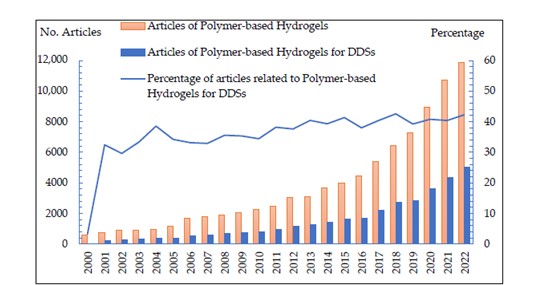Hydrogels in Targeted Drug Delivery

Polymer-based hydrogels as targeted drug delivery systems are making waves in the world of modern medicine. Understanding these innovative options pushes research topics to consumer products.
The wave of novel therapeutics in modern medicine is here. Drug delivery systems (DDS) like polymer-based hydrogels provide an innovative option for effective medical treatments, a growing need. Hydrogels are versatile, biocompatible, and responsive to specific stimuli such as pH and temperature.
You can also read: Water Decontamination with Yeast Hydrogel
The various types of polymer-based hydrogels available provide useful and adaptable alternatives to traditional drug delivery mechanisms, making them ideal candidates for targeted drug delivery.
What are Hydrogels?
Polymer-based hydrogels are three-dimensional networks of crosslinked hydrophilic polymers. When connected, these crosslinked polymer networks create a porous space, allowing the hydrogel to hold water and biological fluids. The material of the hydrogel is soft and the polymer networks are nonporous, creating a gel-like web that maintains its structural integrity when filled with fluid. Think living tissues. The hydrogel’s swelling behavior regulates drug release and delivery, countering limitations of traditional DDS such as short half-life.

Macroscopic to molecular scale visual of a polymer-based hydrogel for purposes of drug delivery.
Courtesy of Nature Reviews Materials.
Types of Hydrogels
Polymer-based hydrogels come in a variety of “flavors” with varying advantages and limitations that determine the application of the hydrogel technology. They are classified based on origin, crosslinking, pore size, stimuli response, and others.
- Classification Based on Origin: Polymer-based hydrogels are classified via natural or synthetic origins. Natural polymer materials like alginate, collagen, chitin, gelatin, and cellulose extracted from animals and plants offer good biocompatibility and biodegradable properties. Synthetic polymer materials, like polyvinyl alcohol (PVA), polyethylene glycol (PEG), acrylamide, and polyethylene oxide (PEO), can be chemically modified and industrially produced. They offer advantages of precision and control at the sacrifice of biosafety and biodegradability.
- Classification Based on Crosslinking: Polymer-based hydrogels are classified into physically crosslinked hydrogels or chemically crosslinked hydrogels depending upon the method of crosslinking. Physical crosslinking refers to modes that include ion crosslinking, hydrophobic interaction, physical entanglement, and hydrogen bonding. Chemical crosslinking methods include UV radiation crosslinking, click chemical crosslinking, and Schiff base crosslinking.
- Classification Based on Pore Size: Pores, or openings, channels, or cavities between the polymer network chain, provide structural integrity and offer a mechanism for diffusion. The presence of pores is dependent upon the manufacturing process and the diameter of the pore determined by the manufacturer. Porous hydrogels enable the loading and release of medications and bioactive agents, making them practical for targeted drug delivery systems.
- Classification Based on Responsiveness: Responsive hydrogels, or “smart” hydrogels, modify their behavior, structure, or properties in response to stimuli such as pH, temperature, pressure, light, and others. The polymer network contains specific functional groups which allow for targeted drug release in response to said stimuli.
Research Trends in Targeted Drug Delivery
Polymer-based hydrogels are a lively topic in academic settings, with explosions in research seen over the last years and decades. Research organizations such as Harvard University’s Wyss Institute help pave the way for research trends in polymer-based hydrogels. This surge in research leads to gel technologies of increasing functionality, such as site-specific delivery and advanced drug release strategies. As researchers continue to collaborate, technologies will continue to advance. With these advancements, sophisticated biomedical therapeutics tailored to a patient’s needs will result, affecting the lives of millions of individuals.

Publications related to polymer-based hydrogels from 2000 to 2022. Courtesy of MDPI / gels Journal.
Available Products and Additional Applications
Polymer-based hydrogels are an effective and innovative pathway for targeted drug delivery. Products such as sericin nanoparticles are carriers that deliver drugs to malignant melanoma cancer cells to inhibit growth. Thermoresponsive hydrogel nanocomposites for the treatment of postsurgical brain tumors are promising, as well. Other applications for polymer-based hydrogels include biosensors, wound dressing, tissue regeneration, food packaging, and PFAS removal from water. With anticipated compound annual growth rates (CAGR) shown at 6.7% from 2020 to 2027, polymer-based hydrogels are revolutionizing industries and do not appear to be stopping anytime soon.
